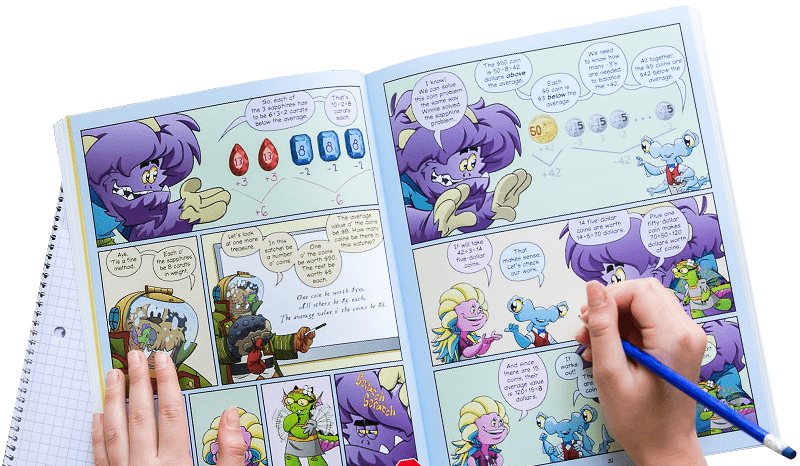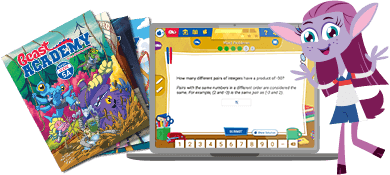Sim
Take turns connecting dots, but try not to make a triangle in your color.
Instructions
Draw six dots in a hexagon shape.

Each player has their own color of marker. Take turns drawing a line connecting any two dots with your color.


Try not to complete a triangle with all three sides in your color. Whoever makes a triangle in their color loses.

Only triangles with all three corners on dots count.

For younger players, first draw pencil lines connecting all of the dots. This makes it a bit easier to see what lines are still available to draw in your color.

Don't forget: it's Beast Academy Playground, not Beast Academy Study Hall. Change the rules, be silly, make mistakes, and try again. The Variations and Learning Notes are here for you if you want to dive deeper, but not all of them apply to learners of every age. The most important thing is to have fun.
What do you think of this activity?
We're always looking to improve. Submit your feedback to us below.
- paper
- markers
- pencil
- shapes
- spatial reasoning
- MP1
- K.G.A.2
- K.G.B.4
- 1.G.A.1
- 2.G.A.1

Ready to level up?
Keep problem solving with Beast Academy’s full math curriculum for students ages 6–13. Check out our captivating comic book series and immersive online platform.
LEARN MOREBring problem-solving to your classroom
Keep your entire class engaged with a full book and online math curriculum, for students ages 6–13. 98% of teachers say they’re satisfied with Beast Academy.
LEARN MORE



Ready to level up?
Keep problem solving with Beast Academy’s full math curriculum for students ages 6–13. Check out our captivating comic book series and immersive online platform.
LEARN MOREBring problem-solving to your classroom
Keep your entire class engaged with a full book and online math curriculum, for students ages 6–13. 98% of teachers say they’re satisfied with Beast Academy.
LEARN MORE
Sign up to be notified when new videos are released.
















































